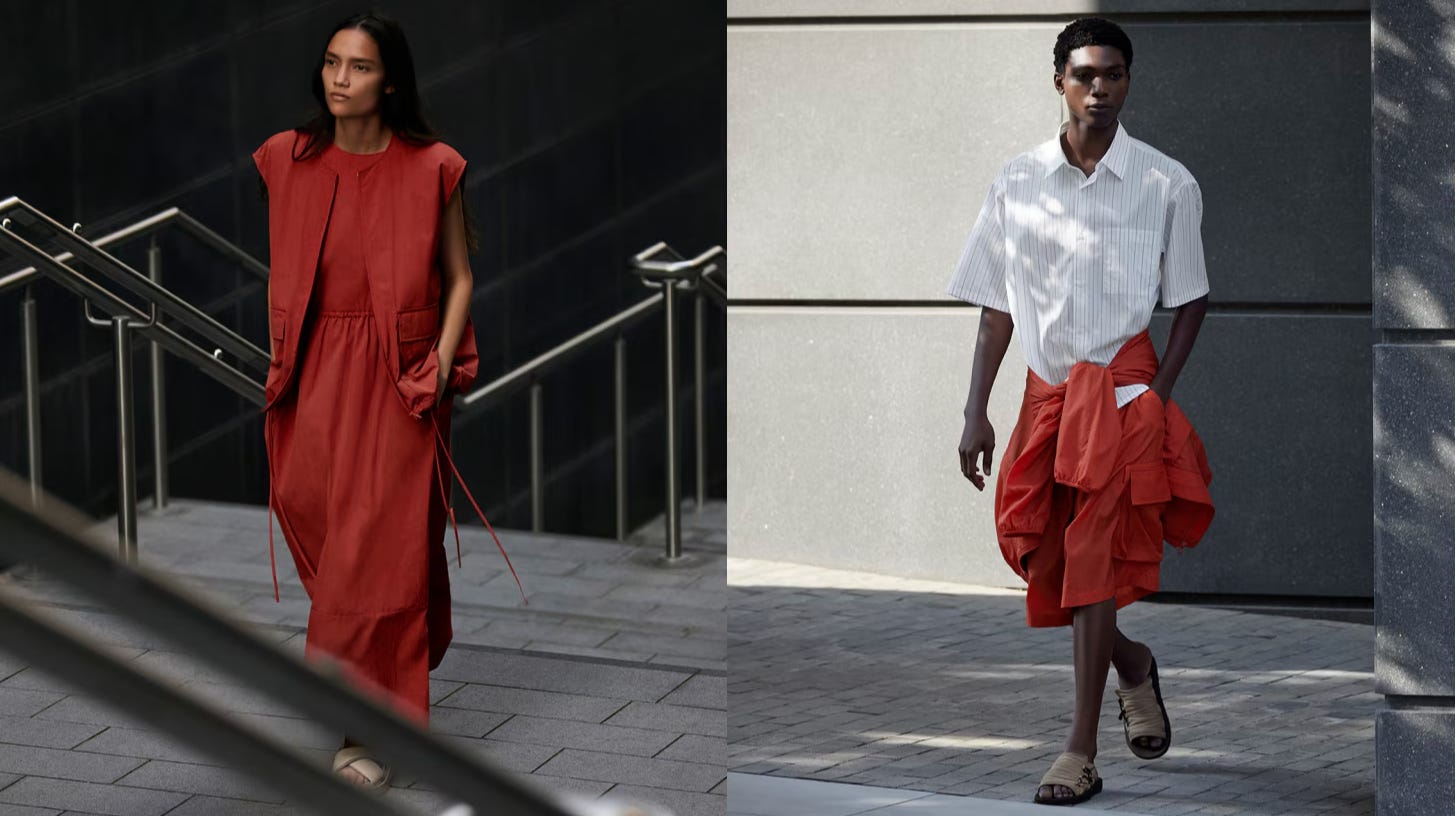Is it ok to shop with Uniqlo?
The brand say they are not fast fashion, even when they are everything, everywhere all at once. So how much should we value their sustainability efforts?
“We are misunderstood as a fast fashion brand, we are the opposite,” said Kazumi Yanai, a Board Director at Uniqlo (and son of founder Tadashi Yanai) at a press briefing last week. Uniqlo is the latest high street retailer to distance itself from the term that was once so celebrated for its ingenuity and desirability, and now is better understood as irresponsible, toxic, landfill generation that is pulling the bottom end of the industry down into ever more disastrous practises.
Uniqlo is the high street clothing giant that hails from Japan and can sell you socks, t shirts, cashmere pulls, neat skirts and workable trousers, ‘tech fit’ jackets and activewear, ‘Heat tech’ clothing, every type of overcoat and multiple designer collaborations. It’s code of unbranded quality minimalism is a hit, and it’s expanding: Uniqlo has grown 70% in the last five years, and this year plans to open multiple new stores worldwide.
The growth is not surprising - the prices are very seductive (£29.90 for a 100% merino knit, £14.90 for a cotton t-shirt) but then so is the design. There are no brash logos (like you find in Gap), no divisive prints (like you find in M&S). Variety and excitement comes in the collabs - JW Anderson, Anya Hindmarch and Clare Waight Keller are all deep into multiple sell out collections. The store experience is super clean, with an intuitive and navigable layout and all the latest tech designed for efficiency and speed, (checkout tills that will recognise everything when you dump it in a bucket, friendly store staff who can locate a single item in a single size for you, no matter how large the store).
When Clare Waight Keller’s third C: range dropped last month, the campaign was compelling: cool young things striding through an urban environment in clothes that had just the right amount of design twist. In a tasteful palette of beige, black and scarlet, there was a go with anything skirt, sporty twinsets, really exciting rainwear, the sort of clothing you could easily mix into your wardrobe with much more elevated pieces. Clare’s aesthetic has been honed at Chloé and Givenchy where her creative leadership gave women beautiful, wearable fashion. She doesn’t shout, she whispers, using quality fabrics and utilitarian design to do the talking. Only now she is doing it at Uniqlo at a fraction of the price.
But… flip the labels. Aside from the 100% wool pulls, and the 96% cotton t shirts, you will find a lot - A LOT - of polyamide. This is how the pricing works.
My basic rule of thumb for consumers trying to navigate greenwashing has been - just buy something 100% natural and therefore biodegradable. This doesn’t solve labour issues or even dyeing and finishing chemistry, but at least it will mostly disappear from the earth when you are finished with it. Stores piled high with plastics derived product are not the answer.
Uniqlo beg to differ. Their 4th sustainability press update last week in London, saw three of the core Uniqlo executive team fly in from Tokyo, including Kazumi Yanai. Teams from France, the Netherlands and Germany were also in attendance. Uniqlo weren’t taking this lightly.
So look, here are the facts, in my descending order of most remarkable:




